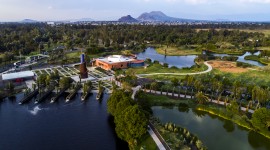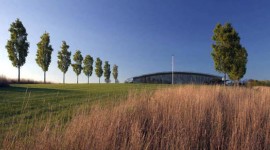Picturesque
Evolved predominantly from mid-eighteenth century British landscape design theory, this style sought to evoke “natural” landscape appearance of rougher terrain and dramatic asymmetric composition in contrast to the axial geometry of earlier Renaissance and Baroque landscapes, such as Versailles. While British landscape critics distinguished the “Beautiful” (as seen in the rolling pastoral designs of Lancelot “Capability” Brown) from the wildly dramatic “Picturesque” (replete with ravines, dead trees, and artificial ruins), America combined these alternative approaches to the “natural” landscape aesthetic within the term “The Picturesque.” In fact, both approaches often were used at a single site. Olmsted, Downing, and Weidenmann all created Picturesque landscapes, including many public parks. The Picturesque style remained popular from the 1840s well into the early twentieth century. As part of the Beaux-Arts era, however, it continued to thrive until the 1940s as the larger landscape setting for many estate-scale Neoclassical dwellings and associated formal garden complexes. This use of the Picturesque followed the lead of the late-eighteenth century British landscape gardener Humphry Repton, who added formal gardens and terraces around the perimeter of large country houses to moderate the transition from the Neoclassical architecture to the surrounding parkland. Thus American designers often placed formal gardens (as well as tennis courts, swimming pools, and other amenities) adjacent to the house (or linked to it by terraces and pergolas), locating these Beaux Arts features within a greater Picturesque naturalistic designed landscape context.














